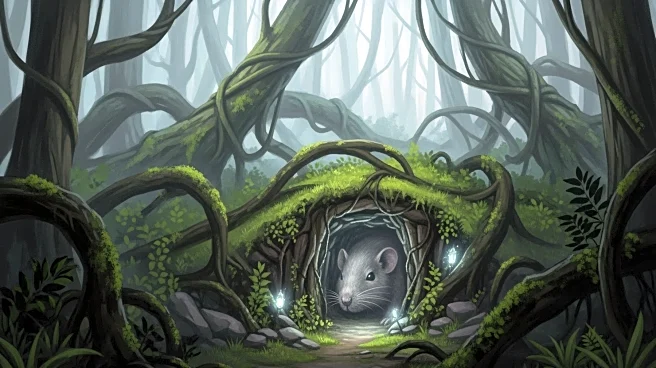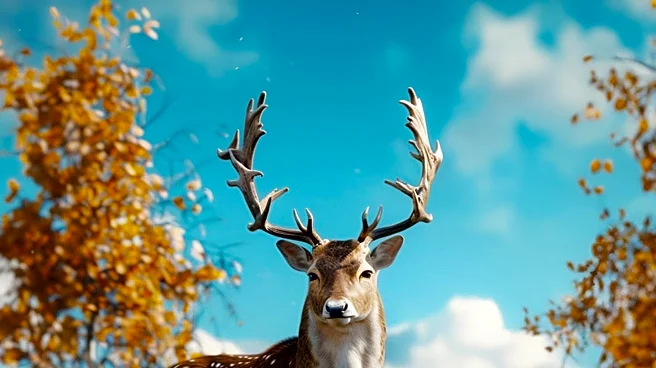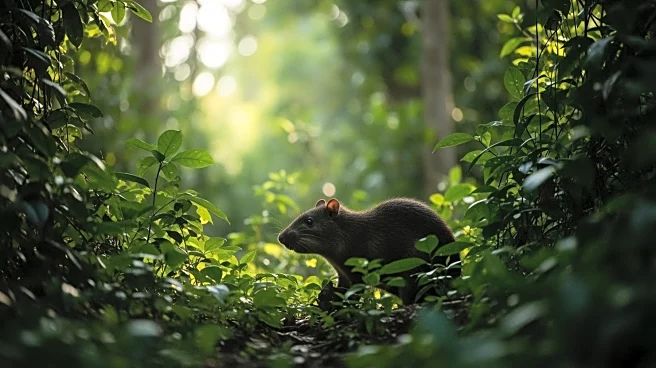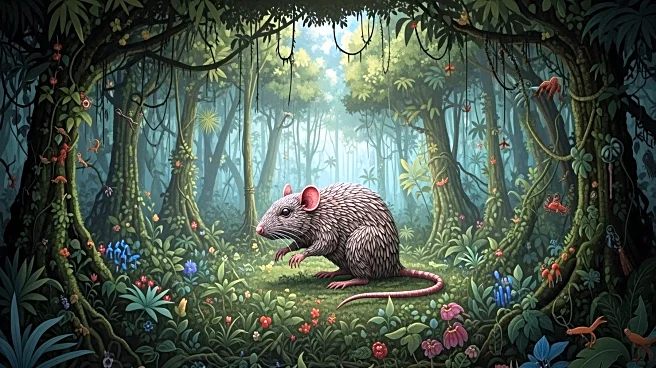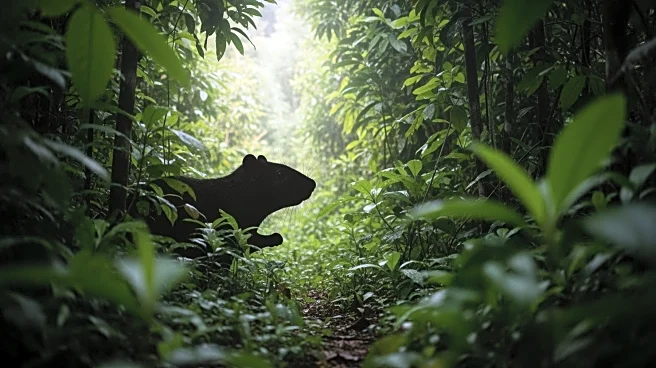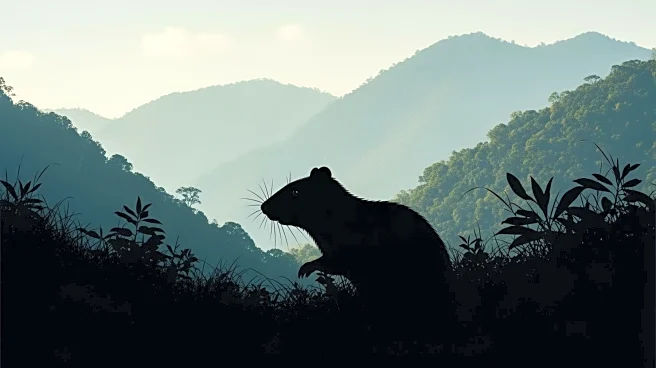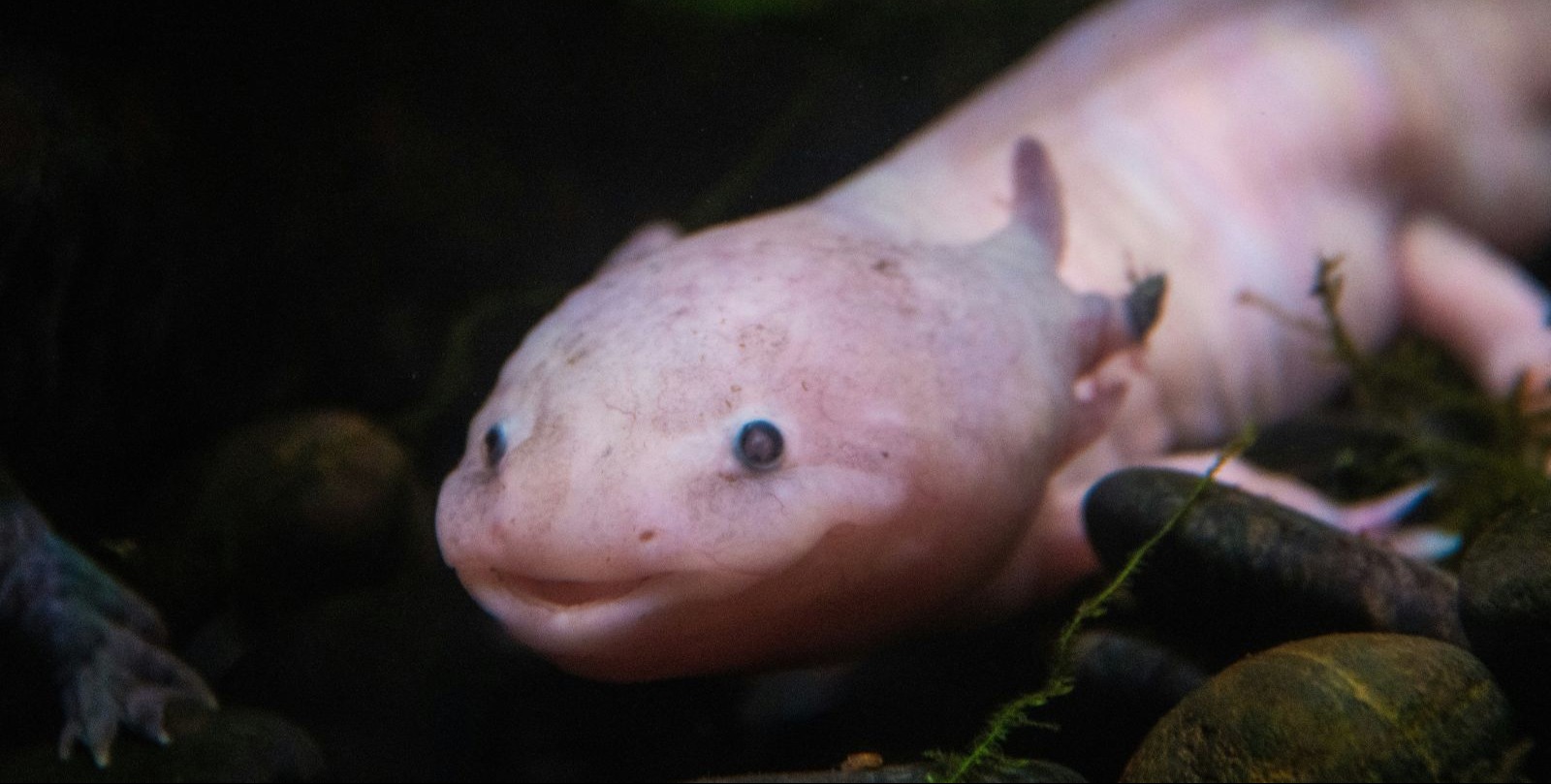What's Happening?
Czech researcher František Vejmělka has rediscovered the giant woolly rat, Mallmys istapantap, in New Guinea, a species that had been in scientific limbo for decades. The rat was initially registered in 1989 based on archival data and museum skull collections,
but no photographic evidence existed until now. Vejmělka's expedition, aided by indigenous hunters, led to the first-ever photographs and data on the rat's diet, behavior, and lifestyle. The woolly rat, nearly 3 feet long and weighing almost 5 pounds, is nocturnal and climbs trees to feed on plants. The discovery challenges previous assumptions about the rat's rarity, suggesting its perceived scarcity is due to the remoteness of its habitat.
Why It's Important?
The rediscovery of the giant woolly rat highlights the importance of field expeditions in understanding biodiversity, particularly in remote tropical regions. This finding could prompt further research into other potentially undiscovered species, emphasizing the need for collaboration with local communities. The study also questions the reliability of museum collections in representing actual wildlife populations, potentially influencing conservation strategies and scientific approaches to studying rare species. This discovery may lead to increased interest and funding for biodiversity research in tropical mountains, impacting ecological studies and conservation efforts globally.
What's Next?
Future research may focus on exploring other remote habitats in New Guinea and similar regions to uncover more about the biodiversity of tropical mountains. Conservationists and researchers might collaborate with indigenous communities to gain access to these areas, potentially leading to new discoveries. The study could also inspire a reevaluation of museum collections and their role in understanding wildlife populations, possibly influencing conservation policies and funding priorities. Additionally, the findings may encourage more expeditions to document and protect rare species, contributing to global biodiversity conservation efforts.
Beyond the Headlines
The rediscovery of the giant woolly rat raises ethical considerations regarding the involvement of indigenous communities in scientific research. It highlights the importance of respecting local knowledge and traditions while conducting field studies. The collaboration between researchers and indigenous hunters exemplifies a model for ethical and effective scientific exploration. This approach could lead to more sustainable and culturally sensitive research practices, fostering mutual respect and understanding between scientists and local communities.
